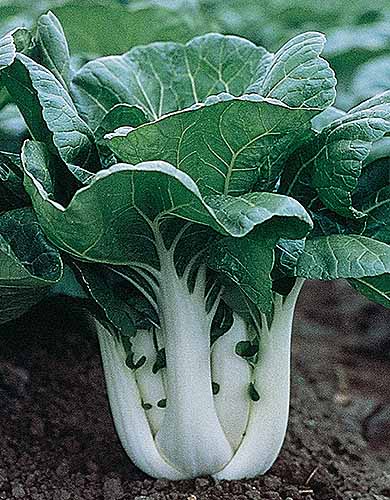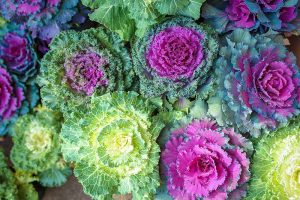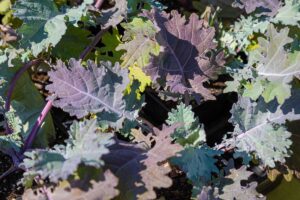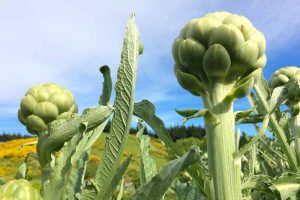It’s so convenient to have a fresh supply of homegrown bok choy available to harvest from your garden at a moment’s notice. You can put stir fries, fresh salads, or smoothies on the table just minutes past picking.
But to reach that harvest-ready state, you must carefully choose when to plant bok choy, also known as pak choi, or by its botanical name: Brassica rapa subsp. chinensis.
The crisp stalks and slightly peppery leaves of this member of the mustard family grow best in cool weather, at temperatures between 55 and 70°F.
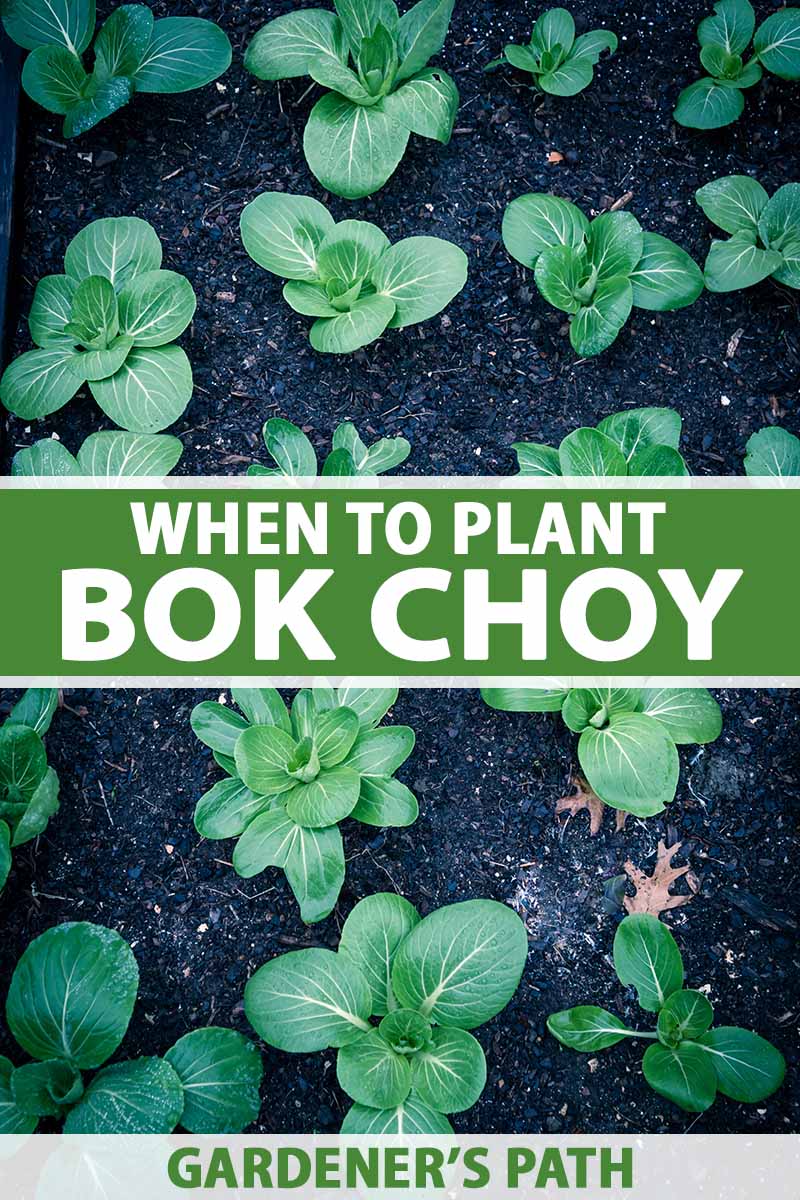
We link to vendors to help you find relevant products. If you buy from one of our links, we may earn a commission.
The cruciferous plants may start flowering and producing seeds, in a process also known as bolting, at two different points in the growing season.
They may send up woody stalks and then go to seed quickly once temperatures exceed 70°F in spring or summer. Or they could also bolt and become inedible if an early frost strikes after sprouting or transplanting in early spring or autumn.
Once it bolts, bok choy develops a spicy flavor, and both leaves and stalks become tough and woody.
It’s essential to time your planting so you can harvest while pak choi is at its flavorful, tender best, for your spring and fall menus.
When you plant at the proper time, it’s a lot easier to grow a healthy crop, too. I’ll be sharing ways to simplify the scheduling here. This is what you can expect:
What You’ll Learn
When to Plant Bok Choy
Getting the timing right on sowing or transplanting bok choy makes the rest of the growing process much simpler.
Aside from increasing your yield of flavorful baby leaves or full-size cruciferous vegetables, planting at the optimal time leads to healthy, robust plants.
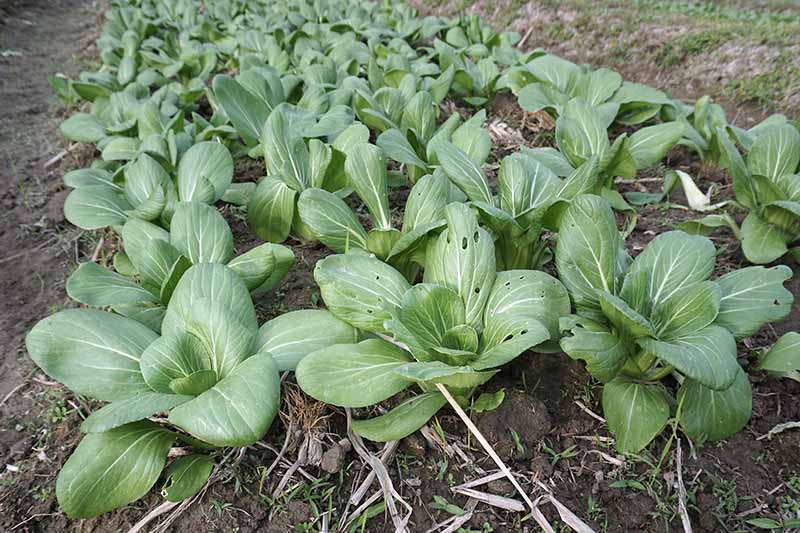
When to plant bok choy will depend on your USDA Hardiness Zone. With an average time to maturity of 50 to 70 days, depending on the variety, this brassica is suitable for growing in Zones 2 to 11.
You’ll also need to know your average last frost date for spring plantings, and your average first frost date if you’re planning a fall harvest.
If you’re not sure of your first and last frost dates, you can find out the average in your region by putting your zip code into this handy calculator from the Old Farmer’s Almanac.
There are also differences in the timing depending on whether you’ll direct seed or transplant.
When to Start Seeds Indoors
If you want to beat the heat, get a jump on the growing season in cold zones, or transplant ahead of the temperatures plummeting in late fall, consider starting seeds indoors.
You’ll still need to plant only after careful consideration of the timing.
In general, you’ll aim to start the seeds so the plants can go in the ground or in containers outdoors when they’re about two to three inches tall.
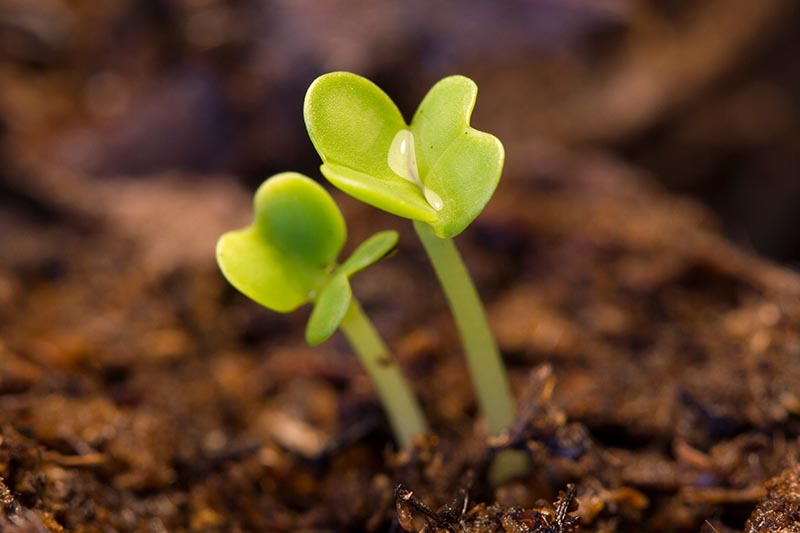
That means starting them four to five weeks ahead of the average last frost date for a spring crop, or in June for a July or August planting and a fall harvest.
When you’re planting a fall crop, you’ll need to check your seed packet to determine the number of days to maturity, and count backwards to give yourself enough time to harvest before first frost.
As for the heat-resistant souls who grow vegetables in Zone 11 and 12, you’ll need to start indoors to plant out in the relative cool of January.
While you’re at it, make sure to opt for the most heat-resistant varieties, discussed below.
Transplanting
Whether you purchase starts from a local nursery or grow them yourself indoors, it’s crucial to plant them out only once nighttime temperatures are reliably above 55°F in the spring.
When you put them in the ground or a raised bed before those clement night temperatures have arrived, you risk seeing your plants bolt and decline in quality before harvest time.
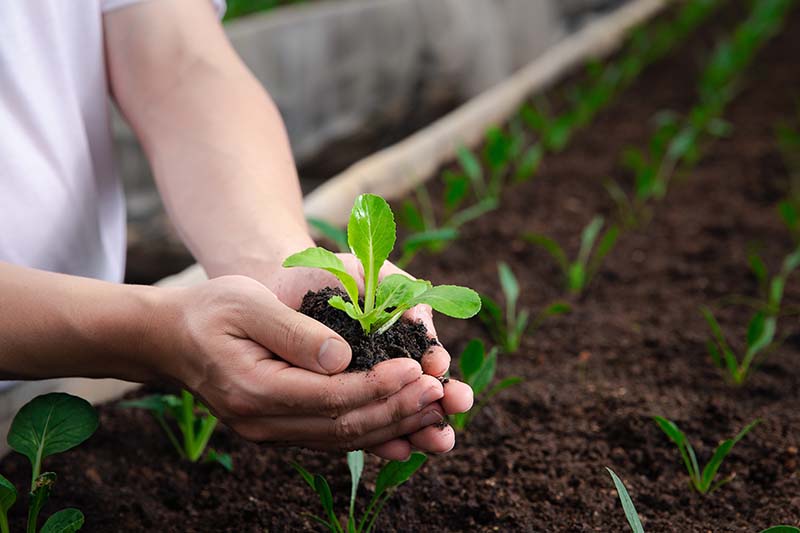
When a surprise frost or freeze catches pak choi after transplanting, and then the weather becomes warm again within a few days, that triggers the plants to bolt prematurely, ruining the taste.
To schedule the ideal transplanting time for a spring garden, shoot for two weeks after your average last frost.
In warmer zones, just like you would before sowing, count out the days to maturity specified on your purchased transplant or the seed packet.
Do a quick calculation to make sure you’re planting far enough in advance. Particularly when you live in a warmer growing area, summer can arrive just two or three weeks after springtime bok choy planting weather.
Deduct any days the plants have already spent growing indoors to determine whether you can grow them without worrying about high temperatures triggering bolting.
For example, if your seedlings are 21 days old and the cultivar you selected takes an average of 55 days to reach maturity, you would have 34 days before they’re ready for full-size harvest.
But if they’re 21 days old and take 70 days to reach maturity, they still have 49 days of growing outdoors before they’ll be ready to pick.
If you’re in Zone 8 or higher, late plantings can grow as biennials, with growth slowing during a mild winter and then returning the following spring to grow for a short while before bolting.
Don’t expect the second-season shoots to be as tender or the stalks as crisp and mild as new crop bok choy, though.
I’ve had some success growing bok choy as a biennial in my slightly cooler area, Zone 7b. I make sure to place a row cover over it when a hard freeze is expected.
I rely on those overwintered greens for the earliest harvest in spring. But since they’re not as tender or mild as new crop baby leaves, I also sow additional seeds after the average last frost date.
When to Sow Seeds Outdoors
As I mentioned, most varieties of this cruciferous vegetable will mature in 50 to 70 days.
Knowing your variety’s specific number of days to maturity from sowing is crucial when you attempt to schedule the most flavorful harvest, so be sure to take a look at your seed packet.
The biggest springtime concern in warmer locations is getting bok choy seeds sown after the last frost, while still giving it enough time to grow big enough to harvest before the arrival of hot weather causes it to bolt.
There is a little wiggle room here.
You can select a bolt-resistant variety if you want to be able to harvest a little later in the summer.
‘Joi Choi,’ for example, produces 8- to 10-inch stalks with deep green leaves. It reaches full size 55 days after direct-seeding and is known for being bolt-resistant.
‘Joi Choi’ is available in 200-seed packets from Burpee.
Or you can sow dwarf varieties that mature more quickly.
‘Toy Choy’ is one option. It grows about five inches tall and spreads just as wide, maturing 30 to 35 days from sowing.

‘Toy Choy’ is available in 100-seed packets from Park Seed via Amazon.
In colder regions, you’ll need to make sure that all risk of frost has passed before sowing your seeds, as an unexpected cold snap could either kill your young plants or cause them to bolt.
Make sure that nighttime lows are 50°F or above before you sow your seeds.
If your region experiences sweltering summertime temperatures, it’s best to only direct sow in the autumn, once temperatures have cooled off.
When to Plant Bok Choy for a Fall Harvest
Determine when the temperatures will once again reach lows of about 55°F, based on local averages and past weather patterns recorded in your gardening journal, and leave enough time for the plants to mature before hard freezes come to call.
Autumn-grown pak choi can withstand a bit of light frost as long as you’ve kept it well watered, and shielded it from surprise freezes with a row cover.
But in general, you should go ahead and harvest the leaves at baby size if extended periods of cold weather are looming.
The Right Timing
I always keep a few extra seeds on hand for my favorite direct-sown leafy greens, including bok choy.
That way, if we have unusual weather or the cultivar I planted bolts before it reaches a harvestable size, I still have viable seeds for a second try.
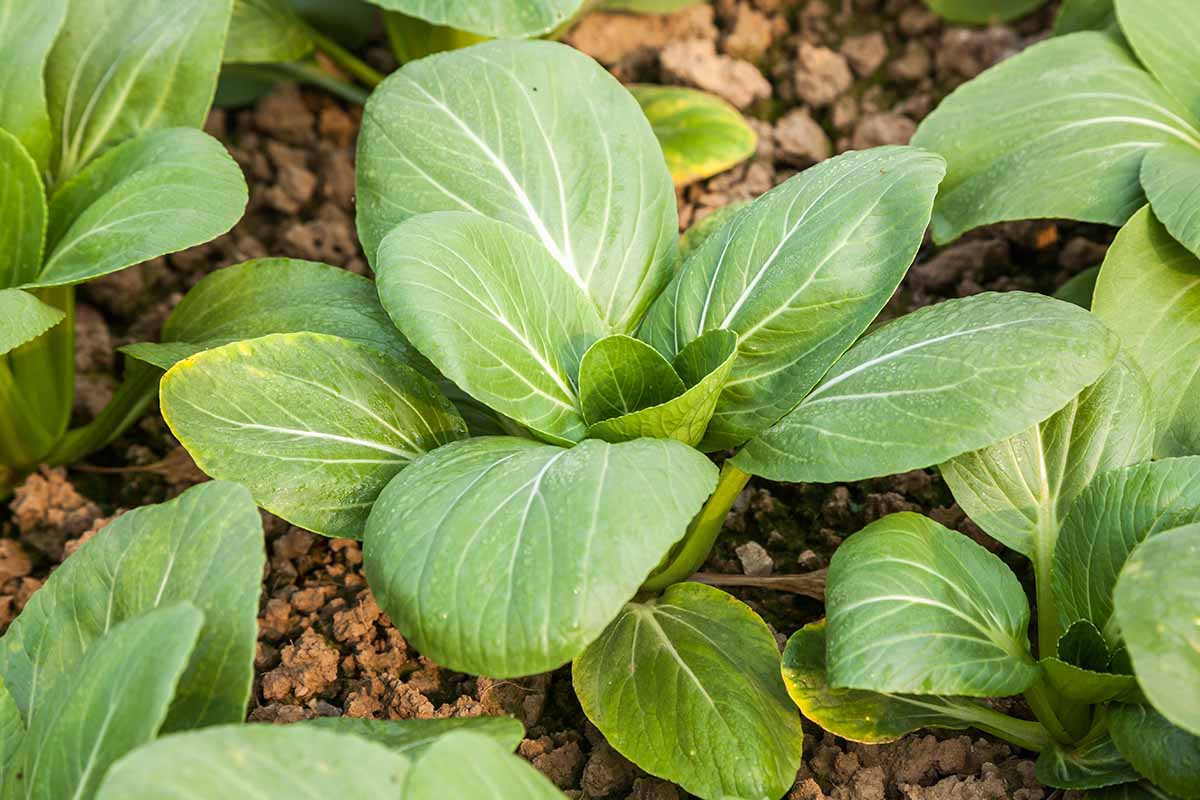
Sometimes I am replanting so late in the spring or fall my only option is to harvest at the microgreen stage, but I’m still happy to have bok choy to toss into salads or smoothies.
What about you? Have you discovered any neat tricks for scheduling when you plant pak choi?
We’d love to hear about your challenges in this area, or tried-and-true techniques. Add your input in the comments section below.
If you found this information helpful, check out these bok choy guides next:
